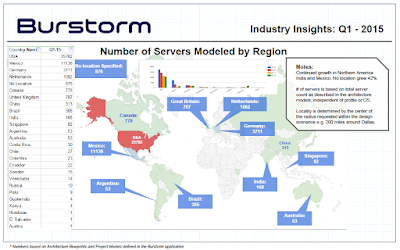Twitter Feed
The Endpoint Imperative: In a Software World, Hardware Does Matter
Hardware matters. From productivity to security to innovation, make sure your machines can keep up. Intel’s Sarah Wieskus joins The End Point Imperative: A Podcast series from Intel to discuss…
IT Transformation with Watson
Credit: Shutterstock by Kevin Jackson & Dez Blanchfield IBM recently launched an exciting new project in the form of a podcast series produced and hosted Dez Blanchfield, appropriately titled the…
The Endpoint Imperative: A Form Factor Renaissance
Workplace expectations are changing, and along with them, the devices we use to do our jobs. In this episode of “The End Point Imperative”, Intel’s Sarah Wieskus tells us about…
Cloud Storage 2.0 Set To Dominate Market
The enterprise data storage marketplace is poised to become a battlefield. No longer the quiet backwater of cloud computing services, the focus of this global transition is now going from…
Top “Cloud Musings” Posts For 2017
( This content is being syndicated through multiple channels. The opinions expressed are solely those of the author and do not represent the views of GovCloud Network, GovCloud…
The Endpoint Imperative: ID’ing and Overcoming the Stumbling Blocks to Digital Transformation
Digital Transformation is the No 1 priority for organizations large and small. It’s imperative that IT remove any obstacles to digital transformation success – including outdated PCs and mobile devices.…
Industry Verticals Tackle Unstructured Data
Organizations around the world are struggling to cope with the current data explosion. A vital characteristic of this data is that it is unstructured and represents things like email,…
The Endpoint Imperative: The Perimeter is Dead; Long Live the Perimeter!
Cloud, mobility and the Internet of Things have obliterated the traditional perimeter that protected organizations. The result: Higher productivity, but bigger challenges for security, data protection, and mobile device management.…
The Data Storage Explosion
Cloud computing innovation will power enterprise transformation in 2018. Cloud growth is also driving a rapid rise in the storage market, exacerbating the enterprise challenge around storage cost and complexity.…
Digital Transformation Drives Mainframe’s Future
Digital Transformation is amplifying mainframe as mission critical to business growth more than ever before. With 70% of the world’s corporate data and over half of the world’s enterprise…
as the linking of physical components and boxes together in way that addresses the organization’s needs. With this mindset, they focus on specific technical characteristics and capabilities. While these aspects still remain crucial to a successful deployment, the cloud solution architect must instead, visualize solutions as the linking together of compatible and interoperable services. With this viewpoint, the actual physical components are less of a concern and the service levels and service “-ilities” (maintainability, usability, portability, sustainability, etc.) rise in importance. They also must quantify the business economics of any delivered design. Many times economic aspects alone will define the difference between a new service launch and a new idea left on the shelf.
 |
|
Figure 1– Burnstorm cloud solution modeling software use
|
 |
|
Figure 2– Interactive solution design comparisons
|
( This content is being syndicated through multiple channels. The opinions expressed are solely those of the author and do not represent the views of GovCloud Network, GovCloud Network Partners or any other corporation or organization.)
( Thank you. If you enjoyed this article, get free updates by email or RSS – © Copyright Kevin L. Jackson 2015)
Cloud Computing
- CPUcoin Expands CPU/GPU Power Sharing with Cudo Ventures Enterprise Network Partnership
- CPUcoin Expands CPU/GPU Power Sharing with Cudo Ventures Enterprise Network Partnership
- Route1 Announces Q2 2019 Financial Results
- CPUcoin Expands CPU/GPU Power Sharing with Cudo Ventures Enterprise Network Partnership
- ChannelAdvisor to Present at the D.A. Davidson 18th Annual Technology Conference
Cybersecurity
- Route1 Announces Q2 2019 Financial Results
- FIRST US BANCSHARES, INC. DECLARES CASH DIVIDEND
- Business Continuity Management Planning Solution Market is Expected to Grow ~ US$ 1.6 Bn by the end of 2029 - PMR
- Atos delivers Quantum-Learning-as-a-Service to Xofia to enable artificial intelligence solutions
- New Ares IoT Botnet discovered on Android OS based Set-Top Boxes


